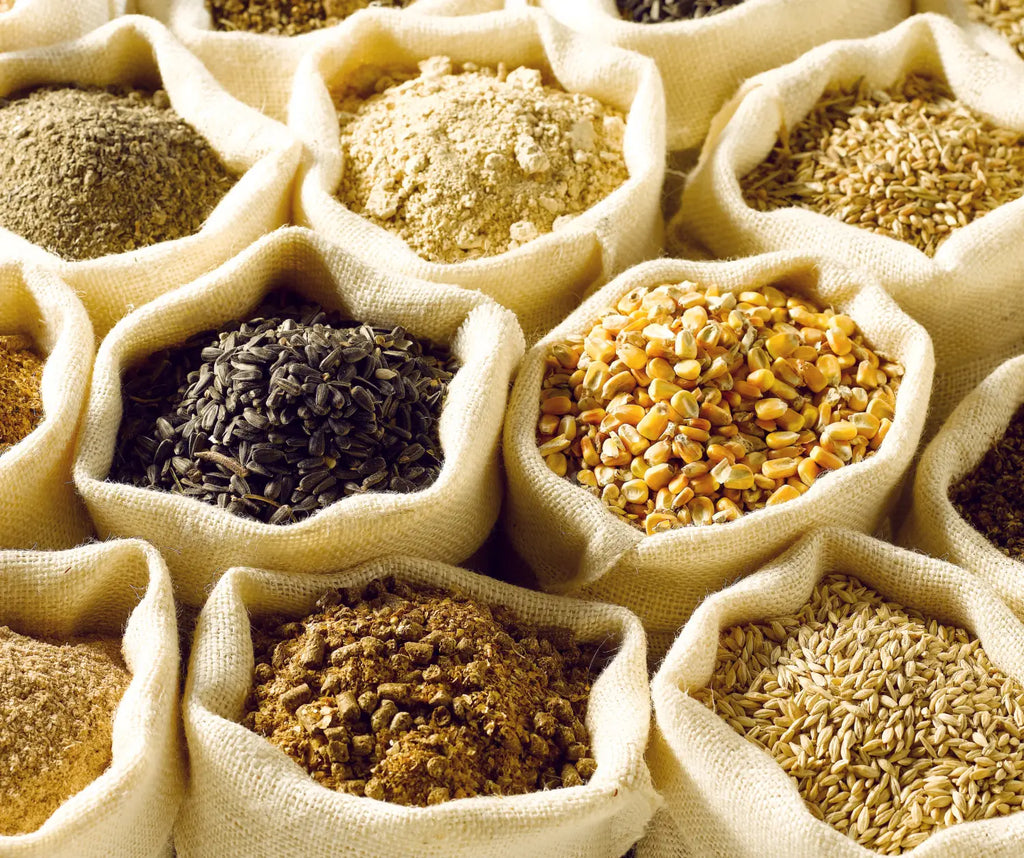Raw Materials Series: Grains/Cereals
Kristi van der RietThe Mighty Grains: A Cornerstone of Human Progress
For thousands of years, grains have been small but mighty forces driving human advancement. The cultivation of these essential crops marked a pivotal shift from nomadic lifestyles to settled agricultural societies, sparking the Neolithic Revolution. This transformation led to the creation of permanent settlements, social restructuring, and new roles for managing, distributing, and trading grains. As milling technology advanced from primitive mortars to sophisticated mills, grains became easier to process and store. These developments not only supported growing populations but also laid the foundation for modern grain-based industries.

Cereals and Grains: Understanding the Difference
Cereals refer to plants grown for their edible fruits, named after Ceres, the Latin goddess of the earth and harvest. The fruit itself is the grain, or "caryopsis" in botanical terms, which is the edible part of the plant. In alcohol production, grains such as barley, corn, rye, wheat, and rice are essential.
The Starch Conversion and Fermentation Process
Many alcoholic beverages are made using starch-rich raw materials. These raw materials are not fermentable by yeast in its unaltered state and require an additional step to prepare them for alcoholic fermentation. This step is referred to as starch conversion. The following is an overview of spirit production using grains as a raw material:
Step 1: Source of starch to sugar converting enzymes
Grains consist mostly of starch, a complex carbohydrate that is not fermentable by yeast. Yeast can only ferment simple sugars such as glucose. To convert these starches into fermentable sugar we need a specialized enzyme called amylase.
Amylase is naturally present in malted barley. Malted barley is barley that has been allowed to germinate to a certain degree and then dried during the Kilning process. It is during the germination process that amylase is produced.
Malted barley is the most popular grain used for producing beers or whiskies. It is either used as the main grain or in combination with other grains to produce grain-based spirits.
In cases where malted barley is not available, commercial sources of amylase can be used such as Dextrolique and Sugralique. These are concentrated forms of amylase that can be added to grains that do not naturally contain these enzymes.
Step 2: Starch conversion
Once you have sourced your grains and selected your source of amylase whether that be from the grain itself or commercially available enzymes, the next step is to prepare the grains for starch conversion. During starch conversion, the grains are cooked in water at specific temperatures. It is important to stick to the recommended cooking temperatures as too high temperatures will cause the enzymes to lose their functionality and no starch conversion will take place. During a successful starch conversion, the mash will thicken and as the enzymes start to convert the starch into sugar, it will liquefy and become sweet. The sweetness is due to the starches that have now been converted into glucose.
For an in-depth explanation of how to conduct the starch conversion process, please read the following two articles “Starch Conversion using Enzymes” and “Starch Conversion using Malted Barley”
Step 3: Fermentation
Fermentation is the process where yeast metabolizes glucose into ethanol and carbon dioxide. The fermentation process can take anything between 3 and 12 days to complete.
When using grains, you will often hear the term mash or wort. The term mash is used when referring to a fermentation where the grain solids are not separated from the liquid. The term wort is referred to a fermentation where the grain solids are separated from the liquid. Grain and wort fermentations will differ in the amount of flavour and methanol produced as well as the final ethanol yield and ease of processing.
Step 4: Distillation
Distillation is a separation technique where the alcohol, that is produced during fermentation, is separated from the wort/mash using a still. The product, referred to as the distillate, is a clear liquid at a high alcohol concentration.
Now, depending on the distillation technique and the type of still used, the fermentation can either be distilled to produce a distillate that can be regarded as neutral or non-neutral. Neutral spirit is any distillate that has been distilled in such a way that there is no more flavour or aroma left. This is ideal for producing vodka. Non-neutral spirit is when the distillate still retains the smell and taste of the original raw material. This is usually used to produce spirits such as whiskies or moonshine.
Grain Bills
Grain bills refer to the mixture of grains used. Grain-based spirits can either be made from a single grain or by using a mixture of grains. Each contributing special characteristics to the spirits.
Corn: Known for its high starch content, corn is popular for ethanol production, especially in the United States. It is used for fuel ethanol, bourbon whiskey, and as a solvent in pharmaceutical and personal care industries.
Barley: A staple in the beverage industry, barley is prized for its distinct flavour, enhancing beer and whiskey. It also finds use in other applications like solvents.
Rye: Essential in rye whiskey production, rye offers a unique, spicy flavour. Though less common in ethanol production, it is favoured for distinctive beverages.
Rice: Known for its slightly sweet and floral flavour, rice alcohol is used in traditional alcoholic beverages like sake, soju, and baijiu in Japan, China, and Korea. It is also utilized in vinegar production and cosmetics.
Sorghum: Popular in regions where it is abundantly grown, sorghum is used in traditional African beers and Chinese baijiu. Its neutral flavour makes it a versatile base for various spirits and gluten-free products.
Endless Possibilities with Grain Ethanol
Grain ethanol can be blended in various ways to create higher quality and more consistent products. Producers often mix different types of grain ethanol to tailor products for specific applications, demonstrating the versatility and endless possibilities of grain ethanol.
